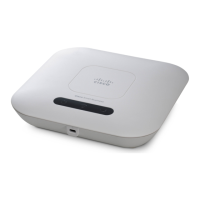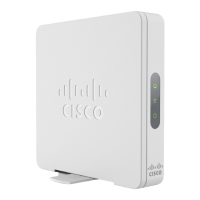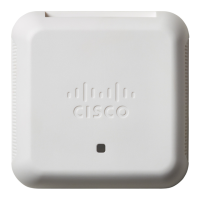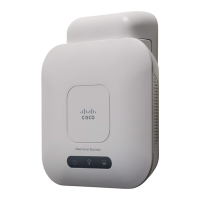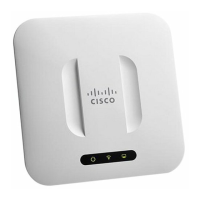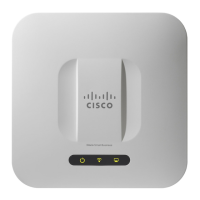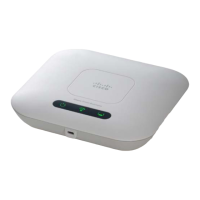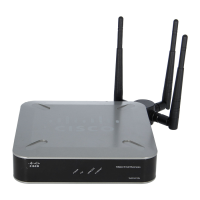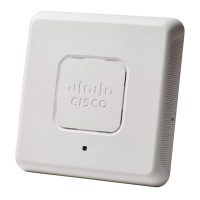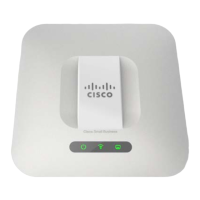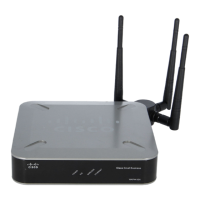• Wireless Network Mode — The IEEE 802.11 standard and frequency the radio uses. The default value of Mode
is 802.11b/g/n for Radio 1 and 802.11a/n/ac for Radio 2. For each radio, select one of the available modes.
2.4G supports the following radio modes:
◦ 802.11b/g — 802.11b and 802.11g clients can connect to the WAP device.
◦ 802.11b/g/n (default) — 802.11b, 802.11g, and 802.11n clients operating in the 2.4-GHz frequency can
connect to the WAP device.
◦ 2.4 GHz 802.11n — 802.11n clients operating in the 2.4-GHz frequency can connect to the WAP device.
5G supports the following radio modes:
◦ 802.11a — 802.11a clients can connect to the WAP device.
◦ 802.11a/n/ac — 802.11a clients, 802.11n, and 802.11ac clients operating in the 5-GHz frequency can connect
to the WAP device.
◦ 802.11n/ac — 802.11n clients and 802.11ac clients operating in the 5-GHz frequency can connect to the
WAP device
• Wireless Band Selection (802.11n and 802.11ac modes only) — The 802.11n specification allows a coexisting
20/40 MHz band in addition to the legacy 20 MHz band available with other modes. The 20/40 MHz band enables
higher data rates but leaves fewer bands available for use by other 2.4 GHz and 5 GHz devices.
The 802.11ac specification allows an 80 MHz-wide band in addition to the 20 MHz and 40 MHz band.
Set the field to 20 MHz to restrict the use of the wireless band selection to a 20 MHz band. For the 802.11ac mode,
set the field to 40 MHz to prevent the radio from using the 80 MHz wireless band selection.
• Primary Channel (802.11n modes with 20/40 MHz bandwidth only) — A 40 MHz channel can be considered
to consist of two 20-MHz channels that are contiguous in the frequency domain. These two 20-MHz channels are
often referred to as the primary and secondary channels. The primary channel is used for 802.11n clients that support
only a 20-MHz channel bandwidth and for legacy clients.
Choose one of these options:
◦ Upper — Sets the primary channel as the upper 20-MHz channel in the 40-MHz band.
◦ Lower — Sets the primary channel as the lower 20-MHz channel in the 40-MHz band. Lower is the default
selection.
• Channel — The portion of the radio spectrum that the radio uses for transmitting and receiving.
The range of available channels is determined by the mode of the radio interface and the country code setting. If
you select Auto for the channel setting, the WAP device scans available channels and selects a channel where the
least amount of traffic is detected.
Each mode offers a number of channels, depending on how the spectrum is licensed by national and transnational
authorities such as the Federal Communications Commission (FCC) or the International Telecommunication Union
(ITU-R).
• Scheduler — For the radio interface, select the profile from the list.
Step 4
In the Advanced Settings area, configure these parameters:
Cisco WAP125 Wireless-AC/N Dual Band Desktop Access Point with PoE
38
Wireless
Radio
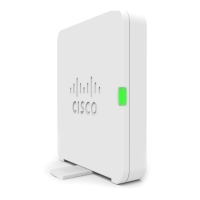
